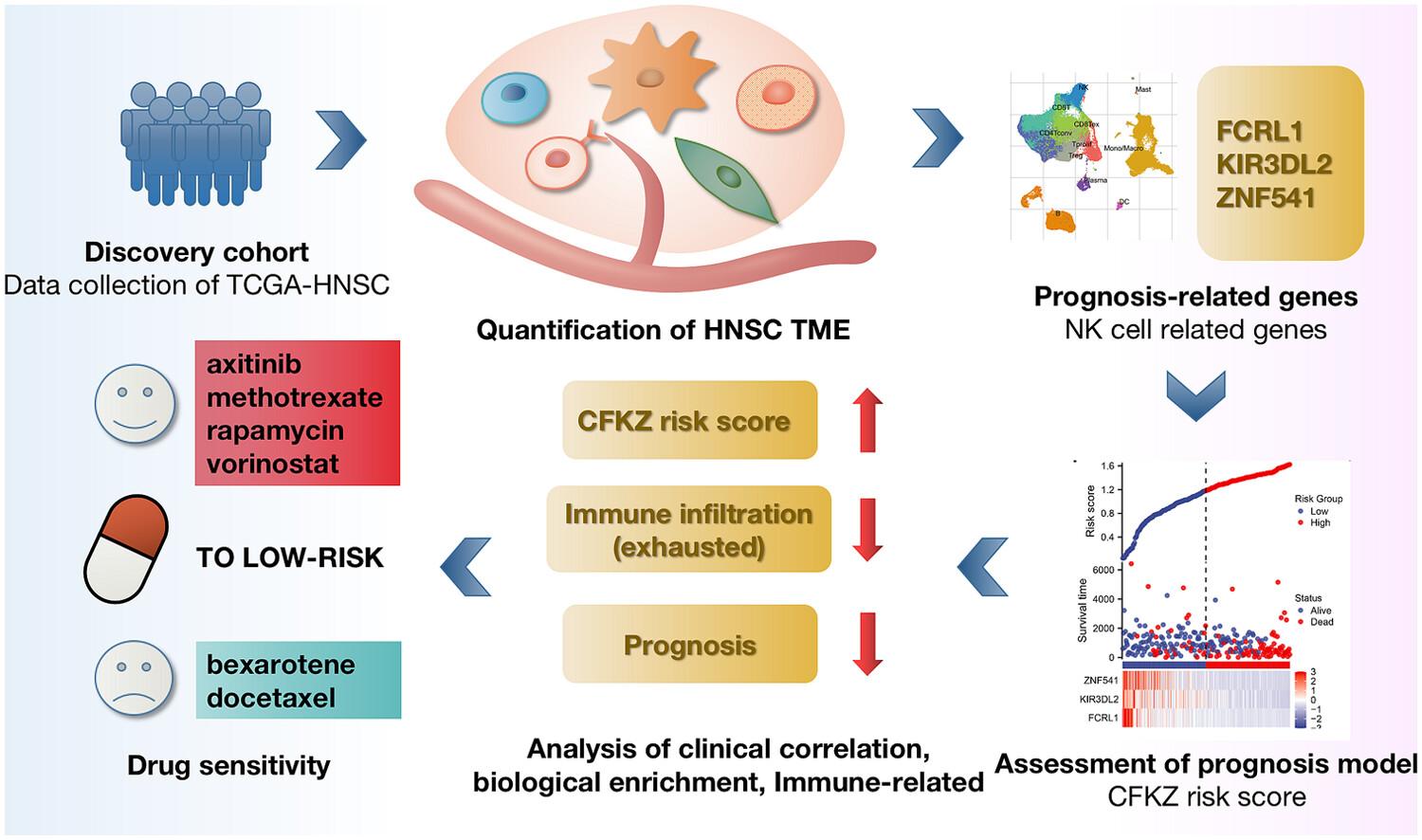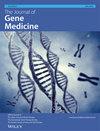Natural killer cell-based signature: Prognostic analysis in head and neck squamous cell carcinoma
Abstract
Background
Head and neck squamous cell carcinoma (HNSC) is a challenging cancer with significant clinical implications. Natural killer (NK) cells have emerged as important players in tumor immunosurveillance, yet their role and potential as prognostic biomarkers in HNSC remain unclear.
Methods
Quantitative analysis using multiple algorithms identified FCRL1, KIR3DL2 and ZNF541 as molecules significantly associated with local NK cell infiltration and patient survival. A prognostic model based on these molecules demonstrated robust predictive performance.
Results
Analysis of high- and low-risk patient groups revealed distinct differences in the tumor microenvironment, indicating an inhibitory immune microenvironment in high-risk patients. Notably, low-risk patients exhibited potential sensitivity to immunotherapy and showed favorable responses to specific drugs such as axitinib, methotrexate, rapamycin and vorinostat. NK cells, important effectors of the innate immune response, were found to play a crucial role in HNSC immunity. The present study provides valuable insights into the correlation between FCRL1, KIR3DL2, ZNF541 and NK cell infiltration, paving the way for future investigations into their roles in HNSC. Activation of NOTCH signaling, MYC targets, DNA repair, E2F targets, epithelial–mesenchymal transition, G2M checkpoint and mitotic spindle pathways in high-risk patients suggests their involvement in disease progression and poor prognosis.
Conclusions
The present study reveals the significance of NK cells in HNSC and their potential as prognostic biomarkers. The CFKZ score offers a promising approach for predicting patient outcomes and guiding personalized treatment decisions in HNSC. These findings contribute to our understanding of HNSC immunobiology and hold implications for precision medicine in HNSC management.


 求助内容:
求助内容: 应助结果提醒方式:
应助结果提醒方式:


